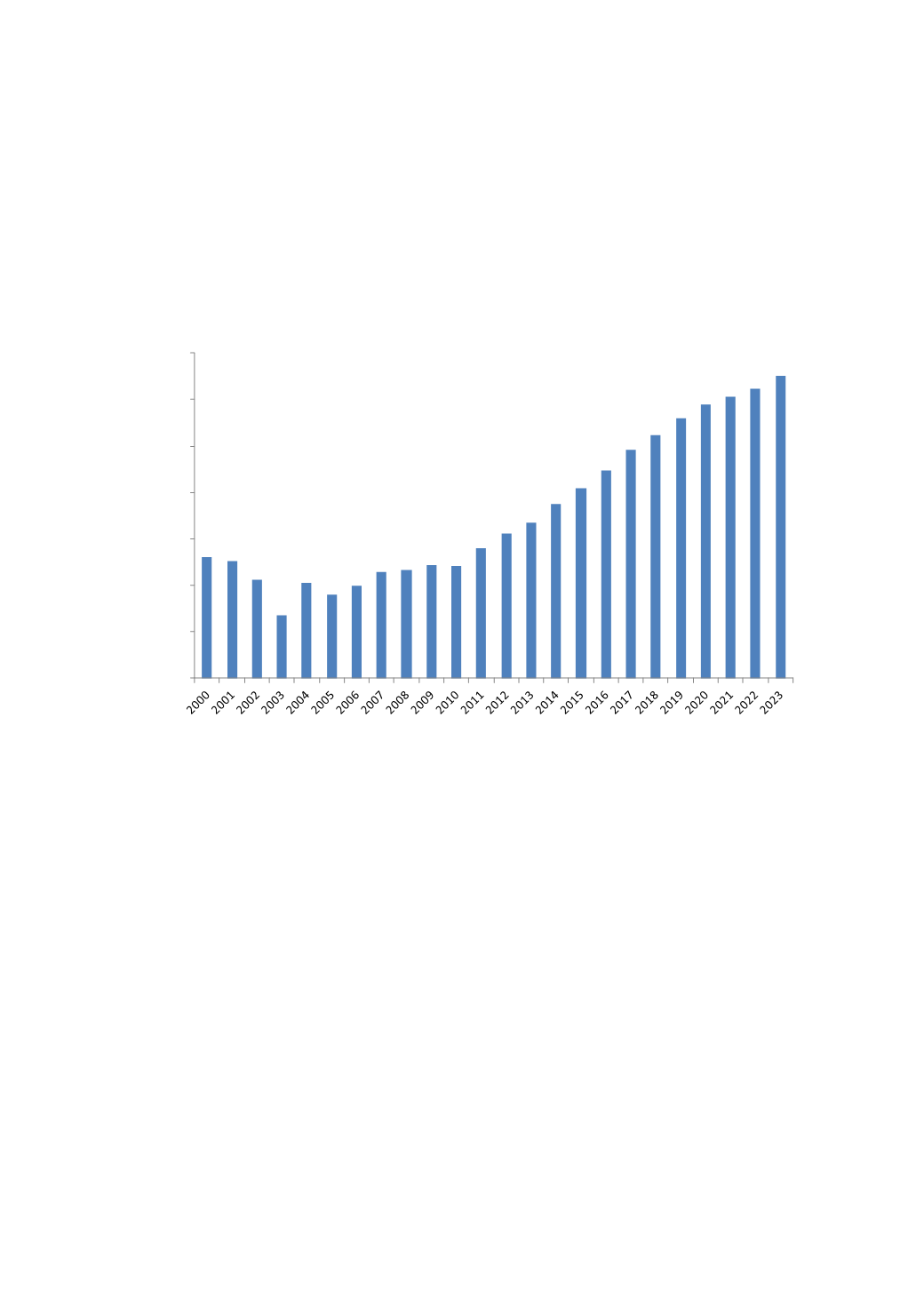
93
third gas-focused licence round was held in October 2010. Three gas development contracts were awarded to consortia
led by KOGAS, TPAO and Kuwait Energy.
Oil
According to the BP Statistical Review, Iraq had total proven oil resources of approximately 150.0 billion barrels as at
31 December 2013, which stayed constant compared to 31 December 2012. According to the BP Statistical Review, in
2013, Iraqi total oil production averaged approximately 3.1 million bbl/d, making Iraq OPEC’s second largest oil
producer as at 31 December 2013. Iraqi oil production primarily comes from three large fields: Kirkuk in northern Iraq,
the North Rumaila fields and the South Rumaila fields in southern Iraq. Oil revenue accounted for approximately 95% of
government revenues, equivalent to more than 70% of Iraq’s GDP in 2013.
Iraq Liquids Production 2000-2023
0
1,000
2,000
3,000
4,000
5,000
6,000
7,000
'000 b/d
Source: Wood Mackenzie (April 2014), BP Statistical Review of World Energy (June 2014).
The Ministry of Oil oversees oil and gas production and development in non-Kurdish regions through its operating
entities, the North Oil Company (“
NOC
”) and the Midland Oil Company (“
MDOC
”) in the central region, and the South
Oil Company (“
SOC
”) and the Missan Oil Company (“
MOC
”) in southern regions. Production in the northern region is
controlled by the Kurdistan Regional Government (“
KRG
”). More than 70% of Iraq’s oil production is generated by
multinational oil companies operating fields under service contracts. See “
The Group’s business—The Group’s
operations—Iraq—fiscal regimes
.” Such multinational oil companies include: Shell, BP, ExxonMobil, Lukoil, Eni,
Pakistan Petroleum, TPAO, Lukoil, Inpex and Bashneft.
One of the major constraints facing Iraq in meeting projections for growth in oil and gas production is the lack of
infrastructure for significant increases in processing and production. Both Iraqi refining and export infrastructure are
severely constrained, with bottlenecks preventing more crude oil processing. Iraqi oil exports are currently running at
near full capacity in the south, while export capacity in the north has been restricted by sabotage and pipeline constraints.
Despite these obstacles, Iraq has begun an ambitious programme to develop its oil fields and to increase its oil
production. Passage of the proposed Oil Law, a bill that was submitted to the Iraqi Council of Representatives in 2007,
continues to be debated. Passage of this law would provide a legal regime for the governance of Iraq’s oil and gas
regime, and would seek to clarify the roles of the regional and federal governments in managing the country’s
hydrocarbon resources. Although there have been multiple drafts and proposals, the Oil Law has not yet been passed as
at July 2014. See “
Risk factors—Risks relating to the jurisdictions in which the Group operates—The Group expects a
substantial amount of its future activity to focus on Iraq, which presents a high-risk operational and security
environment.
”
Oil development is concentrated in the south of Iraq, with the production accounting for 75% of total Iraqi production in
recent years. The largest oil field developments in southern Iraq are within 200 km of the coast. The only export route


